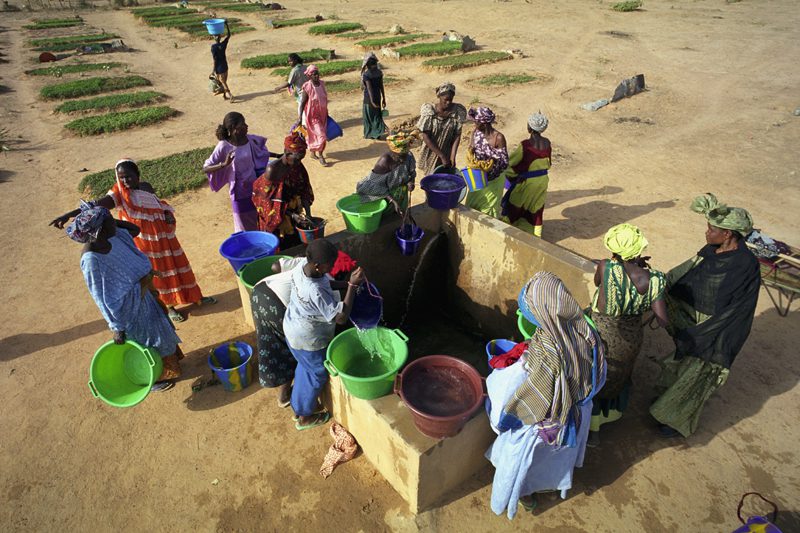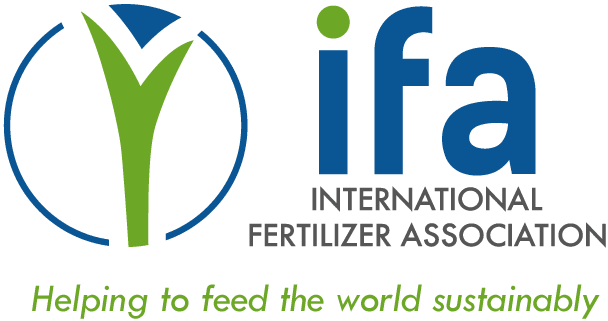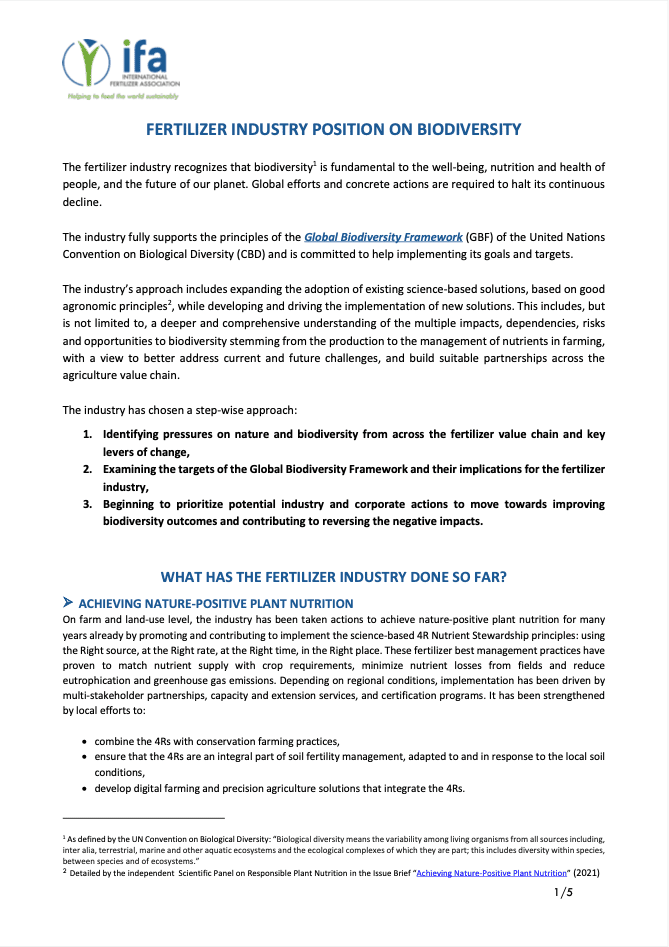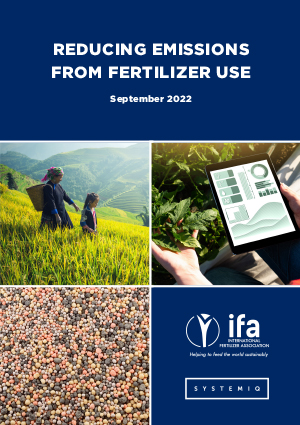Biodiversity
key priorities
The Issue.
Biodiversity is fundamental to the well-being, nutrition and health of people, and the future of our planet. Global efforts and concrete actions are required to halt its continuous decline.
Background / fertilizers and biodiversity
Plant nutrients are essential for life on Earth.
They are critical for the health of soils, plants and animals, help maintain ecosystems and contribute to the production of nutritious food for a fast-growing world population. It is estimated that, on a global scale, about half of these contributions come from mineral fertilizers alone.
The relationship between sustainable food production, plant nutrients and biodiversity is not straightforward and varies from one region to another.
When responsibly managed, fertilizers contribute to the biodiversity of soils, because they increase soil organic matter, soil fertility, and the life of soil microorganisms. Additionally, they offer numerous advantages, including the growth of nutritious plants and food crops, benefiting both humans and animals. In areas where arable land soils are depleted, fertilizers play a crucial role in restoring equilibrium to these ecosystems.
Optimized, efficient and site-specific fertilizer use leads to greatly increased productivity on arable land and to the implementation of sustainable intensification. This also contributes to forestalling deforestation – a key element of the Global Biodiversity Framework and its Target 10, which recognizes sustainable intensification as a biodiversity-friendly practice to protect more natural land from conversion to farming.


Position
The fertilizer industry fully supports the principles of the Global Biodiversity Framework (GBF) of the United Nations Convention on Biological Diversity (CBD) and is committed to help implementing its goals and targets.
The industry’s approach includes expanding the adoption of existing science-based solutions, based on good agronomic principles2, while developing and driving the implementation of new solutions.
This includes, but is not limited to, a deeper and comprehensive understanding of the multiple impacts, dependencies, risks and opportunities to biodiversity stemming from the production to the management of nutrients in farming, with a view to better address current and future challenges, and build suitable partnerships across the agriculture value chain.
Industry actions on biodiversity.


Achieving nature-positive plant nutrition.
The industry has been taken actions to achieve nature-positive plant nutrition for many years already by promoting and contributing to implement the science-based 4R Nutrient Stewardship principles: using the Right source, at the Right rate, at the Right time, in the Right place. These fertilizer best management practices have proven to match nutrient supply with crop requirements, minimize nutrient losses from fields and reduce eutrophication and greenhouse gas emissions.


Developing solutions to reduce fertilizer production’s environmental impact.
The fertilizer industry implements a range of sustainable solutions to significantly reduce its environmental impact including:
- the adoption of established best practices, such as the integration of renewable energy sources in ammonia production, installation of emissions abatement technologies, and the use of carbon capture and permanent sequestration technologies,
- the implementation of innovative water recycling methods,
- the repurposing of the by-product phosphogypsum for phosphate mine reclamation.


Gathering knowledge & science.
Taking the lead in understanding the key biodiversity issues associated with nutrients and fertilizer use, IFA supported a comprehensive review of “Achieving Nature-Positive Plant Nutrition: Fertilizers and Biodiversity” led by the independent Scientific Panel on Responsible Plant Nutrition in 2021.


Climate change is one of the most critical disruptors and threats to biodiversity, therefore IFA’s Scope 1, 2, and 3 reports are an integral part of the fertilizer industry’s biodiversity roadmap.
While acknowledging that the multitude of pressures on nature still requires further analysis, IFA members have already identified priority areas that contribute to minimize the industry’s impact on nature and that will determine a portfolio of strategies and actions:
- Improve the adoption of existing solutions
- Sustain innovation and new solutions
- Drive cross-sectoral & partnerships
The following solutions and development areas are being prioritized as nature-protective pathways, destined to be integrated into the industry’s biodiversity agenda.
The following solutions and development areas are being prioritized as nature-protective pathways, destined to be integrated into the industry’s biodiversity agenda:
Prioritization of nature-positive actions downstream on the farmland:
Priority actions and their contribution to the global biodiversity framework targets.
IMPROVE THE ADVANCEMENT OF PRECISION AGRICULTURE:
This includes soil fertility, water impacts, site-specific crop and fertilizer’s best management practices, according to the 4R principles of nutrient stewardship (using the Right source, at the Right rate, at the Right time, in the Right place – see corresponding issue brief of the Scientific Panel on Responsible Plant Nutrition).
Precision agriculture considers the soil type, the weather, plant growth, etc. and is now increasingly accessible to smallholder farmers through mobile apps and regional soil mapping projects.
Target 10
Ensure that areas under agriculture, aquaculture, fisheries and forestry are managed sustainably, in particular through the sustainable use of biodiversity, including through a substantial increase of the application of biodiversity-friendly practices, such as sustainable intensification, agroecological and other innovative approaches, contributing to the resilience and long-term efficiency and productivity of these production systems, and to food security, conserving and restoring biodiversity and maintaining nature’s contributions to people, including ecosystem functions and services.
Target 7
Reduce pollution risks and the negative impact of pollution from all sources by 2030, to levels that are not harmful to biodiversity and ecosystem functions and services, considering cumulative effects, including: (a) by reducing excess nutrients lost to the environment by at least half, including through more efficient nutrient cycling and use […]
INCREASE FERTIGATION (APPLICATION OF NUTRIENTS WITH IRRIGATION WATER):
This priority area contributes to support water productivity in the soils and plants, addresses water scarcity, and can improve the recycling of wastewater through application of partially treated wastewater.
Target 10
Ensure that areas under agriculture, aquaculture, fisheries and forestry are managed sustainably, in particular through the sustainable use of biodiversity, including through a substantial increase of the application of biodiversity-friendly practices, such as sustainable intensification, agroecological and other innovative approaches, contributing to the resilience and long-term efficiency and productivity of these production systems, and to food security, conserving and restoring biodiversity and maintaining nature’s contributions to people, including ecosystem functions and services.
Target 7
Reduce pollution risks and the negative impact of pollution from all sources by 2030, to levels that are not harmful to biodiversity and ecosystem functions and services, considering cumulative effects, including: (a) by reducing excess nutrients lost to the environment by at least half, including through more efficient nutrient cycling and use […]
FOSTER REGENERATIVE AGRICULTURE PRACTICES:
The fertilizer industry recognizes regenerative agriculture as an outcome-based approach that can reverse biodiversity loss by restoring soil health and improving nutrient use efficiency. This includes conservation farming approaches (cover cropping, crop rotation, composting, minimal or no tillage) depending on the location. The industry acknowledges, however, that there are other approaches with high food security, soil health, biodiversity and climate mitigation potential within the range of land management and restoration activities, and that regenerative practices are complementary or an integral part of them.
Target 10
Ensure that areas under agriculture, aquaculture, fisheries and forestry are managed sustainably, in particular through the sustainable use of biodiversity, including through a substantial increase of the application of biodiversity-friendly practices, such as sustainable intensification, agroecological and other innovative approaches, contributing to the resilience and long-term efficiency and productivity of these production systems, and to food security, conserving and restoring biodiversity and maintaining nature’s contributions to people, including ecosystem functions and services.
DEVELOP INNOVATIVE TECHNOLOGIES;
Further development of enhanced-efficiency fertilizers, such as slow-release fertilizers, controlled-release fertilizers with biodegradable coatings and stabilized fertilizers with inhibitors, as well as water-soluble fertilizers, biologicals and biostimulants were identified as additional crop nutrition solutions that contribute to the biodiversity framework. Additional financing will be required to make these technologies more broadly available.
Target 10
Ensure that areas under agriculture, aquaculture, fisheries and forestry are managed sustainably, in particular through the sustainable use of biodiversity, including through a substantial increase of the application of biodiversity-friendly practices, such as sustainable intensification, agroecological and other innovative approaches, contributing to the resilience and long-term efficiency and productivity of these production systems, and to food security, conserving and restoring biodiversity and maintaining nature’s contributions to people, including ecosystem functions and services.
Target 8
Minimize the impact of climate change and ocean acidification on biodiversity and increase its resilience through mitigation, adaptation, and disaster risk reduction actions, including through nature-based solutions and/or ecosystem-based approaches, while minimizing negative and fostering positive impacts of climate action on biodiversity.
PARTNER FOR MORE IMPACT:
The effect of nutrient management on biodiversity is inter-linked with numerous other dimensions of agricultural development and land management, which calls for joint, coordinated, multi-stakeholder approaches and integrated roadmaps and engagement with the whole agricultural value chain.
The industry partners for the development and implementation of regionally customized nutrient load reduction targets and roadmaps. These roadmaps will be targeted and adapted to each watershed, airshed or other ecological area that may be at risk. They provide the basis for coordinated, multi-stakeholder actions to reduce nutrient loads from multiple sources, including fertilizer use on agricultural land.
Target 7
Reduce pollution risks and the negative impact of pollution from all sources by 2030, to levels that are not harmful to biodiversity and ecosystem functions and services, considering cumulative effects, including: (a) by reducing excess nutrients lost to the environment by at least half, including through more efficient nutrient cycling and use […]
Target 19
Substantially and progressively increase the level of financial resources from all sources, in an effective, timely and easily accessible manner […] to implement national biodiversity strategies and action plans […]
Target 20
Strengthen capacity-building and development, access to and transfer of technology, and promote development of and access to innovation and technical and scientific cooperation […]
Prioritization of nature-positive actions upstream in the production:
Priority actions and their contribution to the global biodiversity framework targets.
DECARBONIZE AMMONIA PRODUCTION:
The carbon emission intensity of nitrogen fertilizer production is expected to decrease over the next decade(s) through the replacement of fossil fuels by renewables like wind and solar (green ammonia) and the increasing use of carbon capture and storage technologies (blue ammonia). In parallel, current production processes will continuously be improved through the application of Best Available Technologies (BATs). Low carbon ammonia as an energy source also has a massive potential to significantly reduce global GHG emissions of other industries like shipping and power generation.
Target 8
Minimize the impact of climate change and ocean acidification on biodiversity and increase its resilience through mitigation, adaptation, and disaster risk reduction actions, including through nature-based solutions and/or ecosystem-based approaches, while minimizing negative and fostering positive impacts of climate action on biodiversity.
Target 20
Strengthen capacity-building and development, access to and transfer of technology, and promote development of and access to innovation and technical and scientific cooperation […]
FURTHER CIRCULAR ECONOMY PRACTICES:
Fertilizer producers continuously work to optimize their use of resources. Waste management and recycling are key to increase the recovery of nutrients from various residual streams. Examples include incorporating some by-products in the production process (ammonium sulphate), turning them into valuable plant nutrients (phosphates), and using surplus energy (heat) and raw materials (sulfur) that derive from other production processes. In addition, fertilizer producers have identified water management and, in particular, the re-use of freshwater throughout the whole production process as a priority for their companies. For instance, phosphate producers are increasingly implementing innovative technologies to minimize water loss during transport and processing of ore. In addition, they apply best water treatment practices to recycle used water in plant processes and for uses in local horticulture
Target 8
Minimize the impact of climate change and ocean acidification on biodiversity and increase its resilience through mitigation, adaptation, and disaster risk reduction actions, including through nature-based solutions and/or ecosystem-based approaches, while minimizing negative and fostering positive impacts of climate action on biodiversity.
Target 20
Strengthen capacity-building and development, access to and transfer of technology, and promote development of and access to innovation and technical and scientific cooperation […]
INCREASE THE REUSE OF PHOSPHOGYPSUM:
The global phosphate industry is increasingly reusing phosphogypsum (PG), a by-product that was previously considered to be “waste” and stacked away on land or dispersed. Based on the recommendation of the International Atomic Energy Agency (IAEA), recent regulatory changes in many countries have removed the main obstacles to the beneficial applications of PG, which has led to the reusing of millions of tons per year.
The fertilizer industry is now pursuing the total reuse of phosphogypsum as a safe resource for which there are many beneficial applications, such as a multi-nutrient sulfur-rich soil improver, as a high-quality plaster or wallboard, for mine reclamation (see point d below), and as a road-bed material. Two peer-reviewed IFA reports explain in detail the beneficial uses of PG (a third IFA report, focusing on the economics of phosphogypsum use, is scheduled to be published by the end of 2024):
• Phosphogypsum: Sustainable Management and Use
• Phosphogypsum: Leadership, Innovation, Partnership
Target 3
Ensure at least 30 per cent of terrestrial, inland water, and of coastal and marine areas are effectively conserved and managed […]
ENHANCE LAND RECLAMATION AND TRANSFORM FORMER MINES INTO PARKS AND WILDLIFE AREAS:
This is already an integral part of IFA’s largest phosphorus producers’ ESG strategy, and has led to new recreational areas and biotopes. It holds multiple benefits for animals, plants, humans, soil, water and air quality. In many regions worldwide, a new mine is not being built without a nature-protective action plan.
Target 11
Restore, maintain and enhance nature’s contributions to people, including ecosystem functions and services, such as the regulation of air, water and climate, soil health […]


